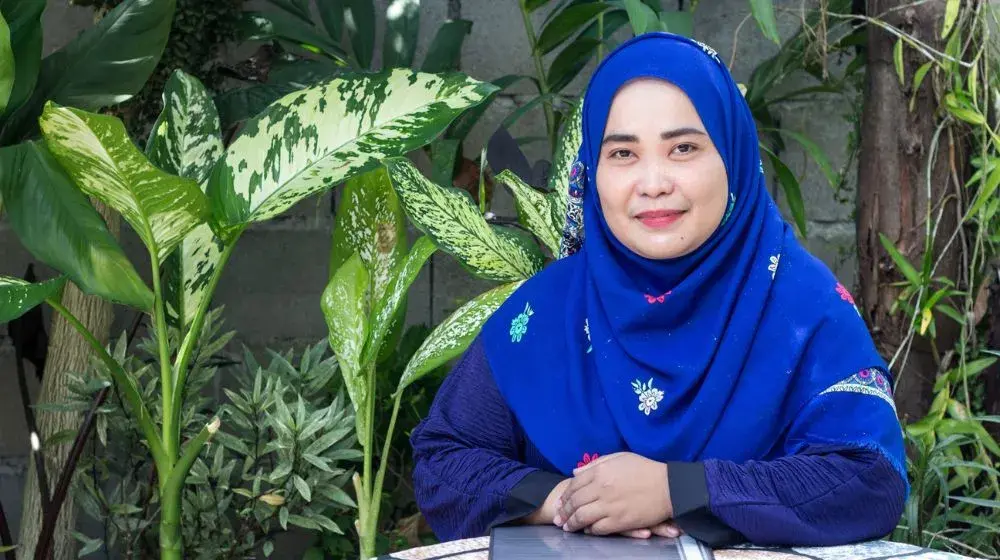BATANGAS, The Philippines - Mary Jean Acarpo, 37, was 7 months pregnant when it happened. She was not prepared for it. “Payapa naman nung umaga --- hindi namin alam kung ano ang susunod na mangyayari (It was a peaceful morning – we did not know what was about to happen).”
On Sunday 12 January 2020 evening, Alert Level-4 was announced for Taal Volcano in Batangas, 60km south of Metro Manila, by the Philippine Institute of Volcanology and Seismology (PHIVOLCS), meaning a "hazardous eruption is imminent” and it could happen in the coming hours or days. The total population within the radius of the 14 km danger zone is nearly 460,000 people. One of them is Mary Jean, who lives in what’s called the “volcano island.” She saw the smoke coming out of the volcano’s crater around 2 p.m. that day. PHIVOLCS soon raised the Alert Level to “2”, then to “3” at 4:00 p.m. and elevated it to “4” at 7:30 p.m. It was a very rapid development. “Dun lang po kami nakatira sa may gilid ng bulkan. Kitang kita namin ang laki ng usok. Natakot kami. Ngdesisyon kaming agad umalis – kasi may mga bata (We live beside the volcano. We were so scared when we saw the huge smoke. We decided to leave immediately -- especially because we have children).”
Batangas is a popular province in the country for tourism, with the picturesque Taal Lake. At its center sits the “volcano island,” or Taal Volcano. The main crater is filled with water, and that is why it is also dubbed as the “lake within a lake.” Taal is the second most active volcano in the Philippines, only after Mayon. Taal’s eruption in 1754 lasted for as long as 200 days, and the 1911 eruption killed 1,100 people and injured more. The last major activities of the volcano were the phreatic eruptions of 1976-1977. Despite being an active volcano, local people have settled on the volcano island for their livelihood. Mary Jean’s family has benefitted from the rich resources of the island – taking care of fish ponds and horses (for tours) as their main source of income. “Hindi pa ako buhay nung pumutok ang bulkan nung huli. Hindi ko alam kung ano pwedeng gawin ng bulkan na to. (I was not born yet when the Taal erupted last (in 1977). So I had not experienced what this volcano can do to us).”
Together with her husband, three sons aged 4, 7, and 14, and a 65-year-old mother, Mary Jean marched from their house to the lakeshore to get on a boat. “Wala naman kaming kotse kaya binilisan na lang namin maglakad (We do not have a car. We had no choice but to walk as fast as we can).” She had no time to pack. She was only able to bring their birth certificates and a few things that she thought she would need when she gives birth – what she could grab were only rubbing alcohol and a blanket. As ashes fell on their heads, tears fell on their cheeks. The ground started to shake as if it imitated how they were trembling inside. Mary Jean started to worry about her baby in her womb, fearing that the stress and the ashes could affect it. Still, she has to keep going.
As emergency alert heightens, so does the need for women and pregnant mothers
“Antigas-tigas tigas ng mga buhok sa ulo namin dahil sa ashfall. Pero hindi na namin ininintindi. Kailagan lang talaga namin makasakay ng bangka (Our hairs are so hard because of the ash fall, but we ignored it. We just really needed to get on a boat).” The family was able to ride on a boat to the other side. They did not know what time it was, as it was dark. When they reached land, a truck arranged by their municipality was waiting for them. From there, they were brought to an evacuation center.
The Alert Level 4 forced locals to flee from their houses, leaving many things behind, including their livelihood. While some sought refuge in their relative’s homes, an estimated 70,000 people took shelter in evacuation centers.
Though the Alert Level was downgraded to “3” (high level of volcanic unrest) later on 26 January 2020, PHIVOLCS cautions that it "should not be interpreted that unrest has ceased or that the threat of a hazardous eruption has disappeared." Many people still cannot go back to their homes as their houses are damaged. Areas like Volcano Island are identified as permanent danger zones. Residents are not allowed to go back, just like Mary Jean, who is still in the evacuation center of Ibaan, Batangas. They will resettle to shelters that will be built by the Provincial Government of Batangas, which will take some more time.
More than 5,000 women of reproductive age (15-49 years old) are still in evacuation centers. Over 300 of them are currently pregnant, including Mary Jean. Here, power outages are common and there is a shortage of sanitation services. According to the Department of Health (DOH), 38% of maternal deaths arise from complications related to pregnancy in the course of labor, delivery or even after six weeks. This type of emergency situation makes pregnant women prone to pregnancy- and childbirth-related complications.
Dr. Emy Pascual-Perez, the Family Unit Head of DOH Region IV realized that in times of disasters, there are existing protocols for four different clusters, namely, water and sanitation, nutrition, mental health, and psychological support, and other medical services, but there is none specifically for pregnant women. She, however, thought, “Care for those who become even more vulnerable under this type of emergency situation like pregnant women, must be a priority.” This prompted DOH to work together with UNFPA Philippines for side-by-side planning for the response as well as coordination of such humanitarian actors and activities related to the reproductive health of those affected by the Taal volcano eruption.
As joint efforts, DOH and UNFPA already distributed 350 maternity packs and 1440 hygiene kits. 10 Women-Friendly Space tents were set up, which can serve as breastfeeding spaces. 700 units of solar radios with lamps were distributed for women with disability, pregnant women, and women who just recently gave birth.
Mary Jean felt so excited when she heard that there is a special package for pregnant and lactating mothers like her. She is amazed by what she saw – sanitary pads, solar radio, underwear, rubbing alcohol, blanket, solar radio, whistle, etc. It was the first time that Mary Jean received something like this relief package dedicated to a pregnant woman.
In one month, Mary Jean will be giving birth at a clinic near the evacuation center. Tearfully, she said, “Napakaimportante nito dahil wala nang natira sa amin. Wala na kaming budget para bumili. Salamat, binigyan nyo kami ng pag-asa (This help is very important as we are left with nothing. We don’t have the budget to buy. Thank you for giving us hope).” She says help arrived when she needs it most.
When asked what she wants for her child to be, Mary Jean said, “Sana, babae (Hopefully, a girl).” “At yung katulad kong matatag (And, a resilient one like me)!” she added, with a smile.
- Ann Regala, Communications and Media Analyst




